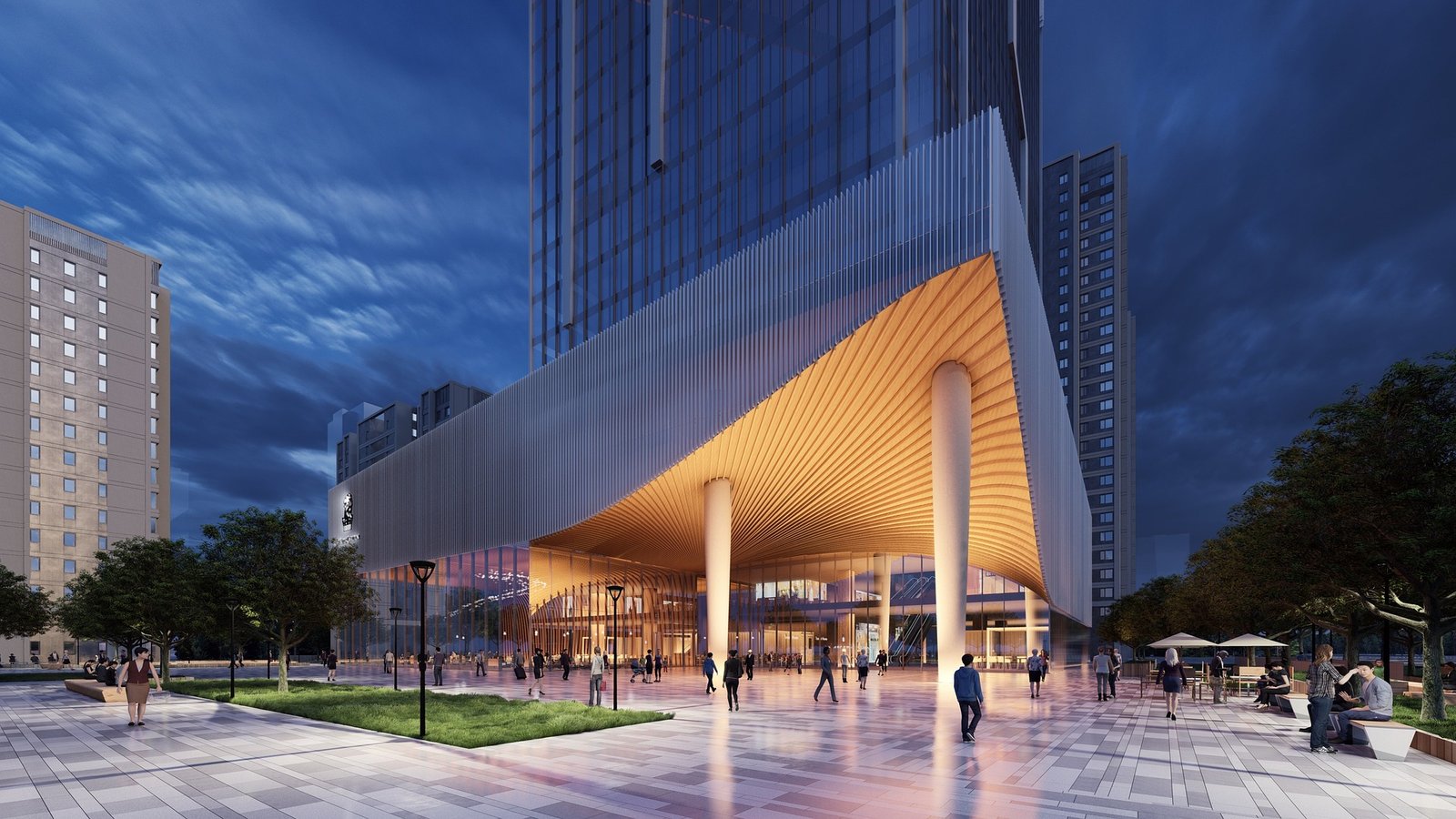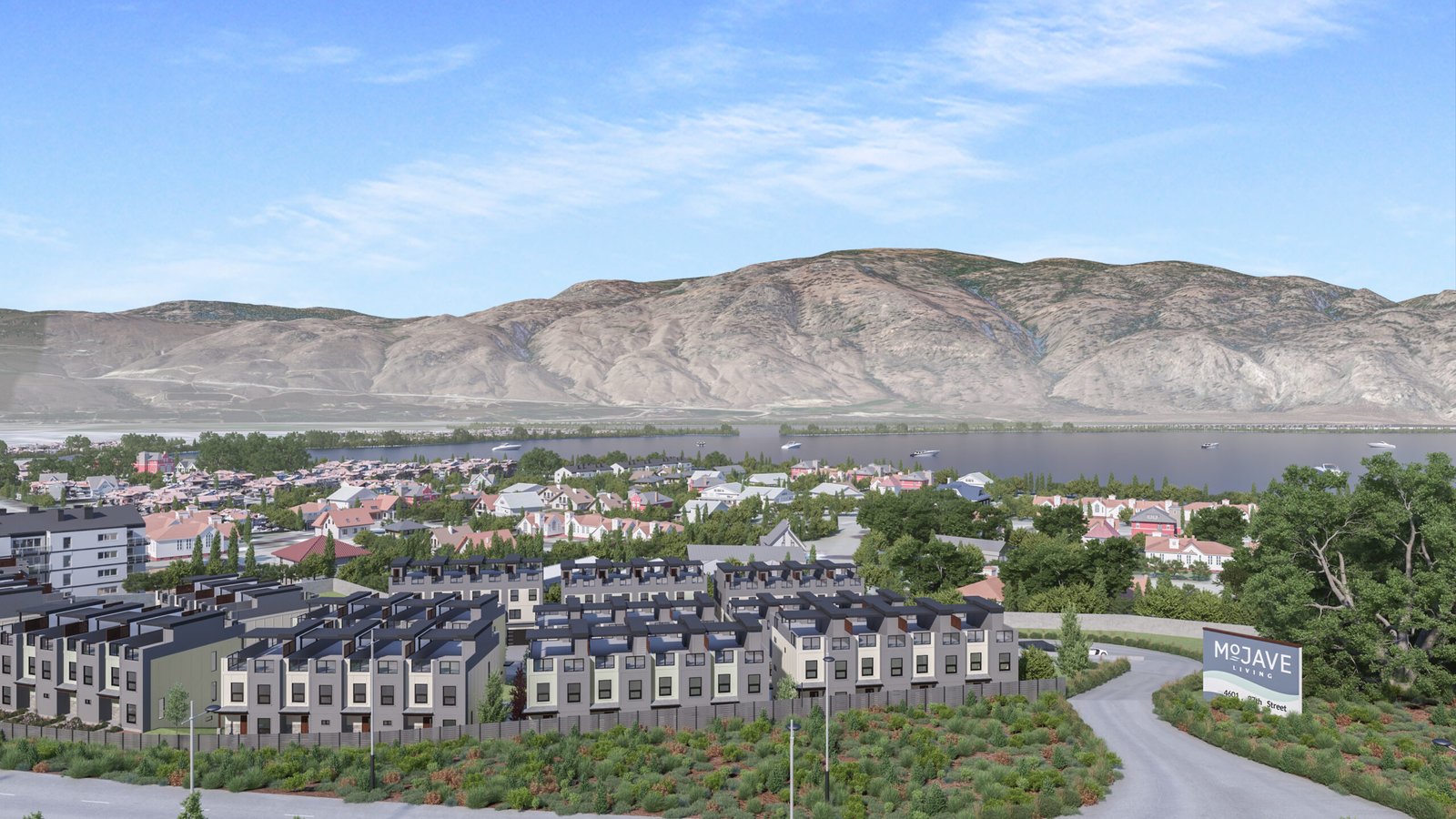In today’s competitive architectural and real estate landscape, creating a lasting first impression is essential. The exterior of a building is the forefront of its identity, drawing potential buyers, investors, and stakeholders to envision the project’s potential.
3D Exterior Rendering has emerged as a transformative tool that converts conventional blueprints into stunning, photorealistic visualizations of a building’s exterior. At Build3dRender, we specialize in leveraging this dynamic technology to bring your designs to life before construction ever begins.
In this complete guide, we explore what 3D Exterior Rendering is, detail the process behind it, highlight its benefits, and share best practices for achieving outstanding results.
Introduction: Redefining Architectural Presentation
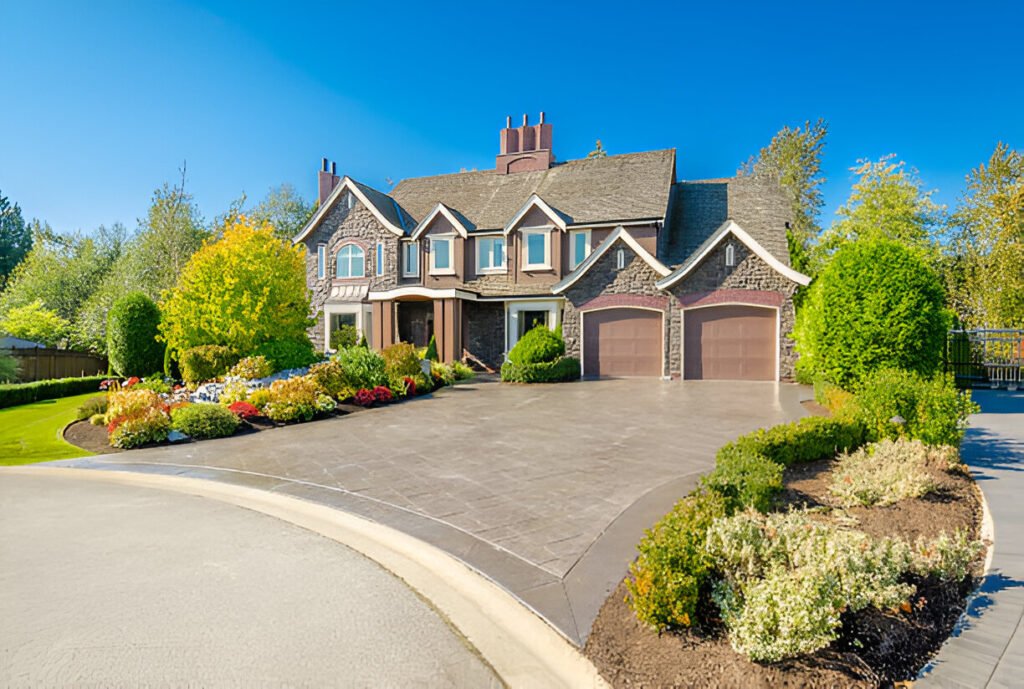
For decades, architects and developers relied on 2D drawings, sketches, and physical models to represent their design ideas.
However,
These traditional methods often leave much to the imagination, failing to capture the nuance of materials, lighting, and environmental context.
3D Exterior Rendering changes this by providing a realistic and immersive representation of a building’s facade, surrounding landscapes, and ambient conditions. By integrating innovative techniques with artistic vision, 3D Exterior Rendering allows all stakeholders to gain a true sense of the project’s aesthetics and functionality, a crucial element for faster approvals and impressive marketing campaigns.
Imagine a potential investor being able to view a richly detailed digital image of your project with realistic shadows, textures, and reflections that mimic nature.
Or consider a homebuyer browsing online listings where each property boasts lifelike visualizations that allow them to almost “step outside” and experience the design firsthand.
This is the power of 3D Exterior Rendering. It not only helps communicate the design effectively but also sets a benchmark for quality and innovation in modern construction.
What is 3D Exterior Rendering?
3D Exterior Rendering is the process of translating 2D architectural plans into detailed, three-dimensional visualizations of a building’s exterior. It utilizes advanced computer graphics, sophisticated texturing, and lighting simulation techniques to create images and animations that are strikingly realistic.
These renderings provide a complete picture of the building, including its structure, materials, landscaping, and even the play of natural light and shadow.
Unlike simple renderings or sketches, 3D Exterior Rendering captures every design nuance, from the intricate details of a modern glass façade to the subtle texture of a brick wall.
It immerses the viewer into the environment, making it easier to understand spatial relationships, design intent, and how the structure interacts with its surroundings. This realistic portrayal is invaluable not only for design validation and refinement but also for effective marketing and client presentations.
The Process of 3D Exterior Rendering
Creating a photorealistic 3D exterior render is a multi-step process that combines technical expertise with creative artistry.
At Build3dRender, our workflow is meticulously designed to ensure every render meets the highest quality standards. Here, we break down the process into its critical stages:
1. Collecting Project Data and Concept Development
Before any visual magic can occur, it is essential to gather all relevant project information:
- Architectural Plans: Floor plans, elevation drawings, and site layouts are collected to understand the building’s structure and context.
- Client Consultation: Detailed discussions with clients define the vision, preferred aesthetics, and specific goals for the rendering.
- Environmental Studies: Analyzing the context—including surrounding landscapes, adjacent structures, and the urban setting—ensures that the final render harmonizes with its environment.
2. Digital 3D Modeling
Once all information is collected, the next step involves creating a comprehensive 3D model of the building and its context:
- Precision Modeling: Using advanced software such as 3ds Max, SketchUp, or Blender, our team constructs a detailed model that reflects every aspect of the design.
- Incorporation of Architectural Details: From the overall layout to the smallest ornamental features, the model is built to scale with painstaking attention to detail.
3. Texturing and Material Application
Transforming the digital model into a lifelike depiction involves applying realistic textures and materials:
- High-Resolution Textures: Authentic images of materials—including stone, metal, glass, wood, and concrete—are mapped onto the model, ensuring each surface looks real.
- Material Properties: Properties such as reflectivity, gloss, transparency, and bumpiness are adjusted to mimic how real materials interact with light.
- Weathering Effects: Introducing subtle signs of wear and natural patina adds an extra layer of realism, making the render visually engaging and believable.
4. Lighting and Environmental Simulation
Lighting is the heartbeat of any exterior render. In this phase, careful consideration is given to both natural and artificial lighting setups:
- Natural Lighting Simulation: Mimicking sunlight at various times of day—whether it’s the soft glow of early morning or the dramatic contrasts of the afternoon—ensures the render captures realistic light dynamics.
- Artificial Lighting: Elements such as street lights, decorative accent lights, and ambient illumination are simulated to enhance the building’s features during nighttime scenes.
- Environmental Enhancements: Including details like the sky, clouds, and ambient weather conditions (fog, rain, or clear skies) further grounds the building in a realistic setting.
5. Rendering and Post-Processing
This stage is where the digital model is transformed into a tangible image:
- High-End Rendering Engines: Tools such as V-Ray, Lumion, or Unreal Engine process the model to produce high-resolution, photorealistic visuals.
- Animated Sequences: For projects that require more than static images, frame-by-frame animations provide virtual fly-throughs or panoramic views.
- Post-Production: Final touches including color grading, compositing, and detail enhancement are applied using software like Adobe Photoshop and After Effects, ensuring that every rendered image meets cinematic quality.
6. Final Review and Client Revisions
No project is complete without a final review:
- Iterative Feedback: Clients are given opportunities to review preliminary renders, provide feedback, and request adjustments.
- Quality Assurance: Rigorous quality checks are performed to ensure visual consistency, detail precision, and overall impact.
- Final Delivery: Once all revisions are made and approved, the render is delivered in your preferred format for print, digital use, or interactive presentation.
Essential Tools and Techniques for 3D Exterior Rendering
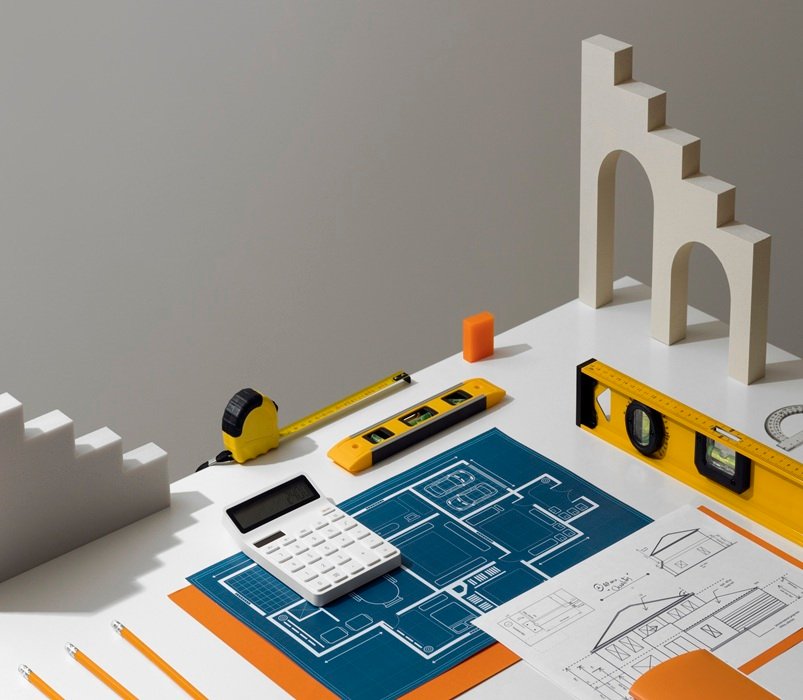
The strength of 3D Exterior Rendering lies in the combination of innovative and advanced software and refined techniques:
- Software Programs: Industry-standard software like 3ds Max, SketchUp, V-Ray, Lumion, and Unreal Engine is integral to crafting detailed models and renderings.
- Texture Mapping and UV Unwrapping: Advanced techniques ensure materials retain their natural appearance on complex surfaces.
- Global Illumination: This method replicates the way light interacts with surfaces, creating natural shadows, highlights, and reflective details.
- Post-Production Tools: Programs such as Adobe Photoshop and After Effects allow for final enhancements and fine-tuning of the visual output.
- Workflow Integration: Combining these tools into a seamless workflow ensures that every stage of the process contributes to a final render that is both accurate and artistically captivating.
The Benefits of 3D Exterior Rendering
Utilizing 3D Exterior Rendering offers a multitude of advantages that extend beyond mere aesthetics. Here are some of the key benefits:
Enhanced Communication and Collaboration
- Visual Clarity: Renderings transform technical blueprints into clear, immersive images that all stakeholders can understand.
- Unified Vision: When architects, clients, and investors view the same detailed render, the risk of misinterpretation is minimized.
- Focused Feedback: Photorealistic visuals serve as a reliable reference during discussions, leading to more productive feedback sessions and collaborative decision-making.
Accelerated Decision-Making
- Rapid Visualization: Stakeholders can quickly see the complete vision of the project, speeding up the approval process.
- Early Error Detection: The level of detail in 3D renderings exposes potential design issues, preventing costly corrections once construction begins.
- Investor Confidence: Realistic visuals build trust and commitment among investors, making it easier to secure funding.
Substantial Cost and Time Savings
- Fewer On-Site Errors: By revealing design discrepancies early, 3D architectural renderings help avoid expensive on-site modifications.
- Streamlined Timelines: With clear, accurate visuals, project schedules are optimized and unnecessary delays are minimized.
- Outsourced Expertise: Partnering with professionals like Build3dRender converts fixed overhead costs into scalable, customized project expenses.
Powerful Marketing and Sales Tools
- Engaging Visual Content: High-quality exterior renderings are perfect for digital marketing—boosting website visuals, social media engagement, and print materials.
- Increased Buyer Interest: Stunning visuals attract potential buyers by enabling them to see the end product clearly, often leading to quicker sales.
- Brand Differentiation: Exceptional renderings elevate your brand’s image, setting your projects apart from competitors and positioning your firm as a leader in innovation.
Future-Proofing Your Design Process
- Scalable Solutions: Whether for a single-family home or a multi-use complex, 3D Exterior Rendering adapts seamlessly to projects of various sizes.
- Continuous Innovation: Incorporating the latest visual techniques ensures that your renderings remain up-to-date and competitive.
- Long-Lasting Assets: High-quality digital renderings serve as enduring marketing and presentation tools that retain their value over time.
The Benefits of 3D Exterior Rendering
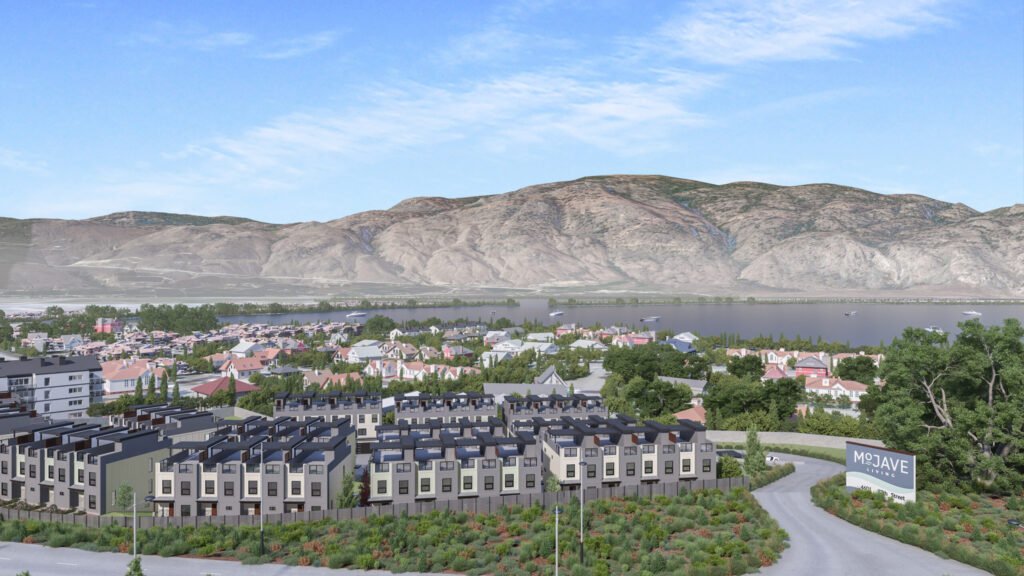
Utilizing 3D Exterior Rendering offers a multitude of advantages that extend beyond mere aesthetics. Here are some of the key benefits:
Enhanced Communication and Collaboration
- Visual Clarity: Renderings transform technical blueprints into clear, immersive images that all stakeholders can understand.
- Unified Vision: When architects, clients, and investors view the same detailed render, the risk of misinterpretation is minimized.
- Focused Feedback: Photorealistic visuals serve as a reliable reference during discussions, leading to more productive feedback sessions and collaborative decision-making.
Accelerated Decision-Making
- Rapid Visualization: Stakeholders can quickly see the complete vision of the project, speeding up the approval process.
- Early Error Detection: The level of detail in 3D renderings exposes potential design issues, preventing costly corrections once construction begins.
- Investor Confidence: Realistic visuals build trust and commitment among investors, making it easier to secure funding.
Substantial Cost and Time Savings
- Fewer On-Site Errors: By revealing design discrepancies early, 3D renderings help avoid expensive on-site modifications.
- Streamlined Timelines: With clear, accurate visuals, project schedules are optimized and unnecessary delays are minimized.
- Outsourced Expertise: Partnering with professionals like Build3dRender converts fixed overhead costs into scalable, customized project expenses.
Powerful Marketing and Sales Tools
- Engaging Visual Content: High-quality exterior renderings are perfect for digital marketing—boosting website visuals, social media engagement, and print materials.
- Increased Buyer Interest: Stunning visuals attract potential buyers by enabling them to see the end product clearly, often leading to quicker sales.
- Brand Differentiation: Exceptional renderings elevate your brand’s image, setting your projects apart from competitors and positioning your firm as a leader in innovation.
Future-Proofing Your Design Process
- Scalable Solutions: Whether for a single-family home or a multi-use complex, 3D Exterior Rendering adapts seamlessly to projects of various sizes.
- Continuous Innovation: Incorporating the latest visual techniques ensures that your renderings remain up-to-date and competitive.
- Long-Lasting Assets: High-quality digital renderings serve as enduring marketing and presentation tools that retain their value over time.
Real-World Applications of 3D Exterior Rendering
3D Exterior Rendering has proved invaluable in numerous real-world scenarios. Below are a few examples illustrating its impact across different sectors:
Residential Projects
For residential properties, detailed exterior renderings provide prospective buyers with a complete view of a home’s character.
Whether it’s luxurious villas, modern apartments, or quaint suburban houses, photorealistic images enable buyers to envision the living experience and the community’s ambience.
Example: A new housing development was showcased using high-resolution renders that depicted each home set within a verdant, welcoming neighborhood. This not only boosted sales but also helped buyers connect emotionally with their future homes.
Commercial Developments
In commercial projects, such as office buildings or shopping centers, 3D Exterior Rendering demonstrates how architectural design merges functionality with aesthetics. Clear visuals help investors understand the spatial dynamics and innovative design elements that enhance building performance.
Example: A mixed-use commercial complex used detailed renderings to highlight its innovative façade and adaptive reuse features, leading to accelerated lease signings from major corporate tenants.
Urban Redevelopment and Infrastructure
Urban renewal projects benefit greatly from exterior renderings. By illustrating how historic structures integrate with modern interventions, these renderings facilitate stakeholder discussions and secure public and private investments.
Example: A city’s urban regeneration plan featured stunning exterior visualizations that showcased the transformation of outdated industrial spaces into vibrant, mixed-use developments, garnering community support and regulatory approvals.
Hospitality and Luxury Real Estate
For luxury resorts, hotels, and upscale properties, high-quality exterior renderings are essential for marketing. They capture the allure and exclusiveness of the project, appealing to high-end buyers and discerning investors.
Example: A luxurious beachfront resort utilized 3D Exterior Rendering to communicate its sophisticated design and breathtaking views, significantly increasing inquiries and bookings even before construction was finalized.
Best Practices for Effective 3D Exterior Rendering
To fully harness the potential of 3D Exterior Rendering, follow these best practices:
1. Detailed Collaboration
- Engage Early: Involve all stakeholders early in the process to capture the design intent accurately.
- Iterative Feedback: Use regular review cycles and feedback loops to fine-tune the design and refine the render.
2. Emphasize Realism and Accuracy
- High-Resolution Textures: Choose top-notch textures that closely mimic real-world materials.
- Accurate Modeling: Ensure every design element stays true to scale and proportion for natural representation.
3. Optimize Lighting and Environment
- Lighting Variety: Experiment with different lighting scenarios to capture the time of day, weather, and environmental mood.
- Context Integration: Carefully integrate the surrounding environment—landscapes, urban elements, and atmospheric effects—to enhance immersion.
4. Maintain Consistency Across Platforms
- Multiple Formats: Tailor your renderings for various platforms, ensuring consistency in color, focus, and detail across digital, print, and interactive media.
- Cohesive Branding: Align the visual style of the render with your company’s brand identity for a cohesive marketing strategy.
5. Leverage Expertise and Tools
- Specialized Software: Utilize industry-leading software to achieve state-of-the-art quality.
- Expert Partners: Partner with experienced professionals such as Build3dRender to leverage their expertise and efficient workflows for superior results.
6. Data-Driven Iteration
- Performance Review: Analyze the performance of previous renderings and adjust techniques based on feedback and evolving trends.
- Continuous Improvement: Document lessons learned to streamline future projects and enhance overall quality.
7. Plan for Scalability
- Adaptable Solutions: Develop renderings that can scale up or down depending on project size and scope.
- Flexibility: Ensure that the rendering workflow is flexible enough to accommodate last-minute changes or client revisions.
8. Stay Updated on Emerging Trends
- Innovative Techniques: Keep abreast of advancements in rendering technology, environmental simulation, and digital visualization trends.
- Future Integration: Incorporate emerging trends like augmented and virtual reality when appropriate to further enhance stakeholder engagement.
The Future of 3D Exterior Rendering
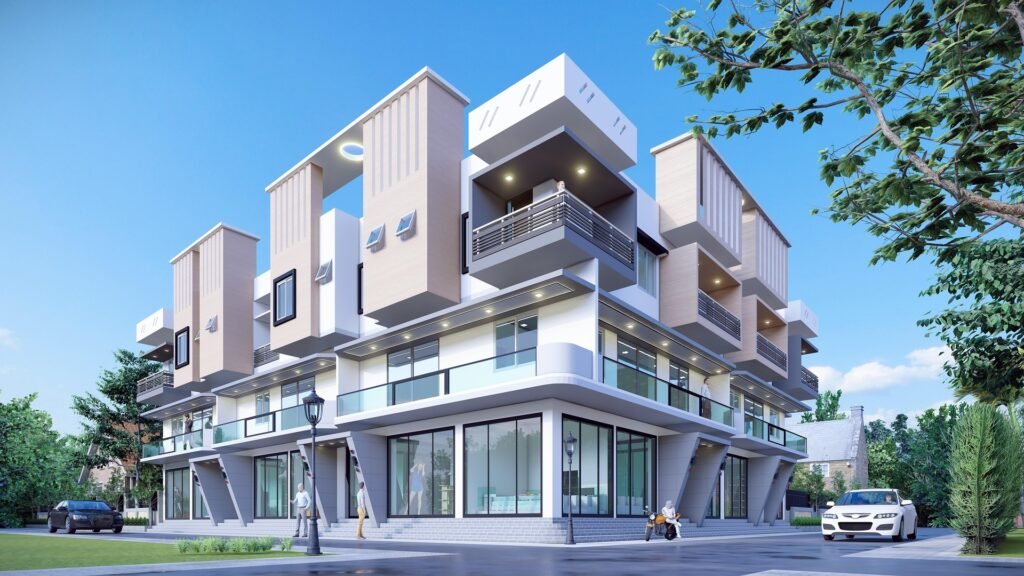
The realm of 3D Exterior Rendering is continually evolving, driven by both technological advances and creative innovation. Looking ahead, several trends are poised to further revolutionize this field:
- Interactive and Immersive Experiences: Future renderings may include interactive virtual tours that allow stakeholders to explore exteriors in real time, boosting engagement.
- Enhanced Material Simulation: Innovations in texture mapping and material properties will continue to push visual fidelity to new heights.
- Improved Collaborative Platforms: Cloud-based solutions will enable real-time collaborations, making it easier for global teams to work together seamlessly.
- Augmented Reality (AR) Integration: AR applications could allow clients to overlay virtual renderings onto existing physical environments for a hybrid visualization experience.
- Sustainability Focus: With increasing awareness around sustainable architecture, future renderings will emphasize eco-friendly materials and energy-efficient designs to appeal to environmentally conscious stakeholders.
By keeping pace with these trends, 3D Exterior Rendering will remain an indispensable part of architectural visualization, ensuring that projects not only look stunning but also fulfill strategic, marketing, and planning goals.
Conclusion: Immersive 3D Exterior Rendering
3D Exterior Rendering is more than just a visual tool, it’s a transformative process that redefines how architectural exteriors are communicated, marketed, and realized. By converting traditional blueprints into immersive, photorealistic images,
3D Exterior Rendering enables clearer communication, faster decision-making, significant cost savings, and powerful marketing presentations. In a market where the exterior of a building sets the first impression, investing in high-quality renderings ensures that your project stands out and resonates with every stakeholder.
At Build3dRender, our passion is to bring your architectural visions to life with unmatched precision and creativity. Whether you’re showcasing a residential development, a commercial complex, or an urban regeneration project, our expertise in 3D Exterior Rendering delivers visuals that captivate, inspire confidence, and drive success.
Connect with us today and let your design come alive through breathtaking digital imagery.
FREQUENTLY ASKED QUESTIONS
What is 3D Exterior Rendering?
3D Exterior Rendering is the process of creating detailed, photorealistic digital images and animations of a building’s exterior, using advanced modeling, texturing, and lighting techniques.
How does 3D Exterior Rendering benefit property marketing?
It produces lifelike visuals that help potential buyers, investors, and stakeholders understand a project’s design, driving faster approval and stronger market appeal.
Which software tools are used in 3D Exterior Rendering?
Common tools include 3ds Max, SketchUp, V-Ray, Lumion, Unreal Engine, and post-production applications like Adobe Photoshop and After Effects.
Can 3D Exterior Rendering simulate various environmental conditions?
Yes, renderings can simulate different times of day, seasonal effects, lighting conditions, and weather scenarios to create a realistic visual environment.
How does 3D Exterior Rendering improve design communication?
It transforms technical drawings into clear, immersive visuals that all stakeholders can understand, reducing misinterpretations and fostering productive collaboration.
What cost and time savings can 3D Exterior Rendering offer?
By identifying design flaws early and streamlining project approvals, it reduces on-site modifications and shortens project timelines, leading to overall cost-saving benefits.
Why should I choose Build3dRender for my 3D Exterior Rendering needs?
Build3dRender delivers high-quality, photorealistic renderings tailored to your project, utilizing advanced techniques and expert craftsmanship to enhance communication, marketing, and project success.


